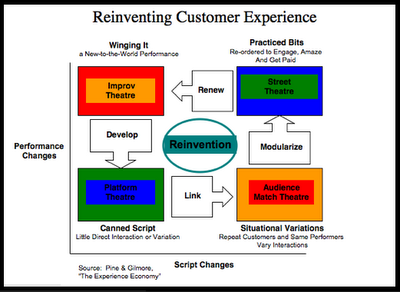Reports from the Knowledge Labs about our recent findings, research topics, and interviews with lifestyle leaders who are creating their own futures.
|
|
| |
How to stimulate your own powers of foresight. Consider the following thought provokers. Ask yourself, in these categories what are the brand new trends and forces? Which are the ones growing in importance? Which current forces are loosing their steam? Which have peaked or are reversing themselves? Which are the "wildcards" about to disrupt us in the future? POLITICAL AND TECHNICAL thought for food: Electronics, Materials, Energy, Fossil, Nuclear, Alternative, Other, Manufacturing (techniques), Agriculture, Machinery and Equipment, Distribution, Transportation (Urban, Mass, Personal, Surface, Sea, Subsurface, Space), Communication (Printed, Spoken, Interactive, Media), Computers (Information, Knowledge, Storage & Retrieval, Design, Network Resources), Post-Cold War, Third World, Conflict (Local, Regional, Global), Arms Limitation, Undeclared Wars, Terrorism, Nuclear Proliferation, Weapons of Mass Destruction, Governments (More/Less Power and Larger or Smaller Scale), Taxes, Isms: Nationalism, Regionalism, Protectionism, Populism, Cartels, Multinational Corporations, Balance of Trade, Third Party Payments, Regulations (OSHA, etc.) Environmental Impact, U.S. Prestige Abroad. SOCIAL AND ECONOMIC Food for thought:
Labor Movements, Unemployment / Employment Cycles, Recession, Employment Patterns, Work Hours / Schedules, Fringe Benefits, Management Approaches, Accounting Policies, Productivity, Energy Costs, Balance of Payments, Inflation, Taxes, Rates of Real Growth, Distribution of Wealth, Capital Availability and Costs, Reliability of Forecasts, Raw Materials, Availability and Costs, Global versus National Economy, Market versus Planned Economies, Generations: Y, X, Boomers, Elderly, Urban vs. Rural Lifestyles, Affluent vs. Poor, Neighborhoods and Communities, Planned or Organic Growth.
Got Knowledge?
|
|
| |
|
|
|
|
The Journal of 2020 Foresight
|
|
| |
|
Wednesday, September 06, 2006

Winging It: Improvising the Reinvention of Customer Experience
Chapter Four: The Tribal Territories
By Steve Howard, CKO
The Knowledge Labs
Table of Contents
Chapter One: Basecamp
Chapter Two: The Ridge
Chapter Three: The Outpost
Chapter Four: The Tribal Territories
"And this quiet crisis involves the steady erosion of America's scientific and engineering base, which has always been the source of American innovation and our rising standard of living.... The U.S. today is in a truly global environment, and those competitor countries are not only wide-awake, they are running a marathon while we are running sprints. If left unchecked, this could challenge our preeminence and capacity to innovate."
Thomas Friedman, “The World is Flat”
DOUBLE NICKEL RANCH. Each of the profit paths to higher margins uses an approach that eliminates customer sacrifice – the gap between what customers expect and what they perceive they receive. Each step up to the next level of value-added (increase in relevance, differentiation and premium price offered) varies two customizing characteristics (changed or unchanged). Each (customizing goods and customizing services) follows the same sequence -- first developing, then linking, modularizing and then renewing the previous offering.
Journal of 2020 Foresight: How does this model apply to the customization of services into staged experiences?
Explorer: The short answer? Through the interplay of dynamic or stable performances and scripts.
J2020F: So it closely resembles the way a company can mass customize a product, but in this model performance replaces product and scripts replace process change?
Explorer: Yes, that’s right.
J2020F: And, so I imagine where before we started in the upper left hand corner with invention for products and exploring for services, we start in the same place for staging experiences?
Explorer: Yes, in the double dynamic stage -- for both performance and scripts -- the world of Improv Theater. Think back to when we visited Pearl Street in Boulder, Colorado or downtown Aspen.
J2020F: Both were very vibrant street scenes. You never know what will happen, it is nearly always fresh and spontaneous -- a new-to-the-world performance every time.
Explorer: The performance and scripts develop into stable theater. In the first anything goes, including customer participation.
J2020F: What happens?
Explorer: In this stage customers are afforded little direct interaction. Once you've seen the act, it changes ever so slightly until the stable performance links back to a more dynamic script in which some customers and performers interact dynamically over and over.
J2020F: So you’re describing a play or a presentation that we would normally associate with an audience. And then, it might morph into the Drew Carrey show. The audience suggests situations and the performers improvise scenes.
Explorer: That’s right.
J2020F: Then?
Explorer: Next the script re-stabilizes while the performance varies a lot in the modularized stage.
J2020F: What do you mean?
Explorer: Here the scripted bits can be rearranged to suit the audience -- the whole purpose of the performance is to capitalize on opportunities to engage and amaze the customer.
J2020F: When we went back to Pearl Street for a second time – I noticed examples of that.
Explorer: The performer allows the audience to dictate which module of script will be performed through their reactions to previous modules. So, on the second night what you saw were bits, but in a different sequence than the first night.
J2020F: And, the whole cycle renews itself with a return to dynamic performance and scripts. It just seems that the more entrenched or widespread the former economic era is or became, the more difficult it is for the old dogs to learn new tricks. Where are we today?
Got Knowledge?
Copyright ©2002 - 2006 Aarnaes Howard Associates. All rights reserved worldwide.
8:21 AM
|
|
| |
|
|
|